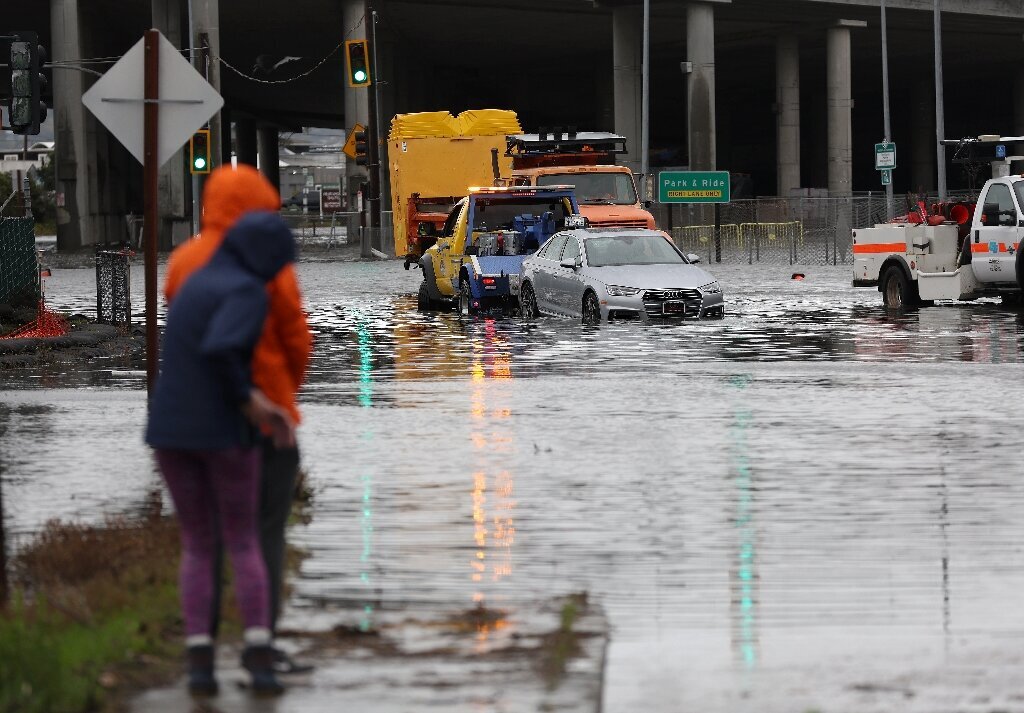 News Staff
News Staff![]() -
April 6, 2023 -
Family & Home -
Governor declares Ca emergency
Gavin Newsome
-
2.4K views -
0 Comments -
0 Likes -
0 Reviews
-
April 6, 2023 -
Family & Home -
Governor declares Ca emergency
Gavin Newsome
-
2.4K views -
0 Comments -
0 Likes -
0 Reviews

DLNews Staff:
Inland regions across the state have been hit hard by a series of snowstorms that dumped feet of snow and sent millions of residents without power. The heavy weather has also forced the closure of Yosemite National Park and stranded some ski resorts.
Governor Gavin Newsom has declared a state of emergency in 13 counties, including hard-hit San Bernardino County. In a Wednesday proclamation, Newsom directed the California Office of Emergency Services to provide local governments with additional assistance and activated the State Operations Center to bring state support to county-led emergency response efforts.
"Significant numbers of state personnel are on the ground supporting San Bernardino County, including from the Governor's Office of Emergency Services (Cal OES), Caltrans, and the California Highway Patrol," Newsom's office said in a press release. In addition, the state is contracting with private companies to accelerate snow removal and clearing roadways, coordinating with investor-owned utilities to restore power rapidly.
The storm impacted more than 40 of the state's 58 counties and left many people stranded inside their homes, with the Los Angeles area seeing its most significant snowfall since 1989. As a result, the National Weather Service has issued a blizzard warning for parts of Southern California, with more than a foot of snow expected in Los Angeles and Santa Barbara counties.
Some of the hardest-hit communities are in the San Bernardino Mountains, where massive amounts of snow have blocked roads. The state Department of Transportation has closed highways 18 and 330 that lead to Lake Arrowhead, Crestline, and Big Bear.
Snowed-in residents were pleading for help from local and state officials, with many still needing groceries or power to get out of their homes. Some lawmakers have called for a state disaster declaration to free up funds to repair road damage and help with cleanup.
This would allow the California Department of Transportation to bring in a more significant number of contractors and hire equipment that is only sometimes readily available. It would also reduce bureaucratic red tape that often stalls emergency response at the local level.
In addition, a state emergency declaration could free up federal highway funds for road repairs. It also could make it easier to bring in resources from outside the state and to hire snow-removal teams that aren't readily available, according to Brian Ferguson, a spokeswoman for the Governor's Office of Emergency Services.
The declaration could also ease some of the logistical challenges of a week of extreme weather in the Golden State and make coordinating disaster relief at the county level easier. Ferguson said that the emergency order would also reduce the cost of resources and allow counties to bring in state National Guard troops to assist.
While the proclamation is just the first step to addressing the issue, it will be crucial for the region's mountain communities that a series of devastating winter storms have hit. It is also likely to free up some of the funding necessary to quickly and efficiently restore power to impacted communities. In addition, it will ensure that resources can be focused on areas with the greatest need.

At Desert Local News, connections are everything. We're not just another social networking platform—we're a lively hub where people from all walks of life come together to share stories, spark ideas, and grow together. Here, creativity flourishes, communities grow stronger, and conversations spark global awareness.